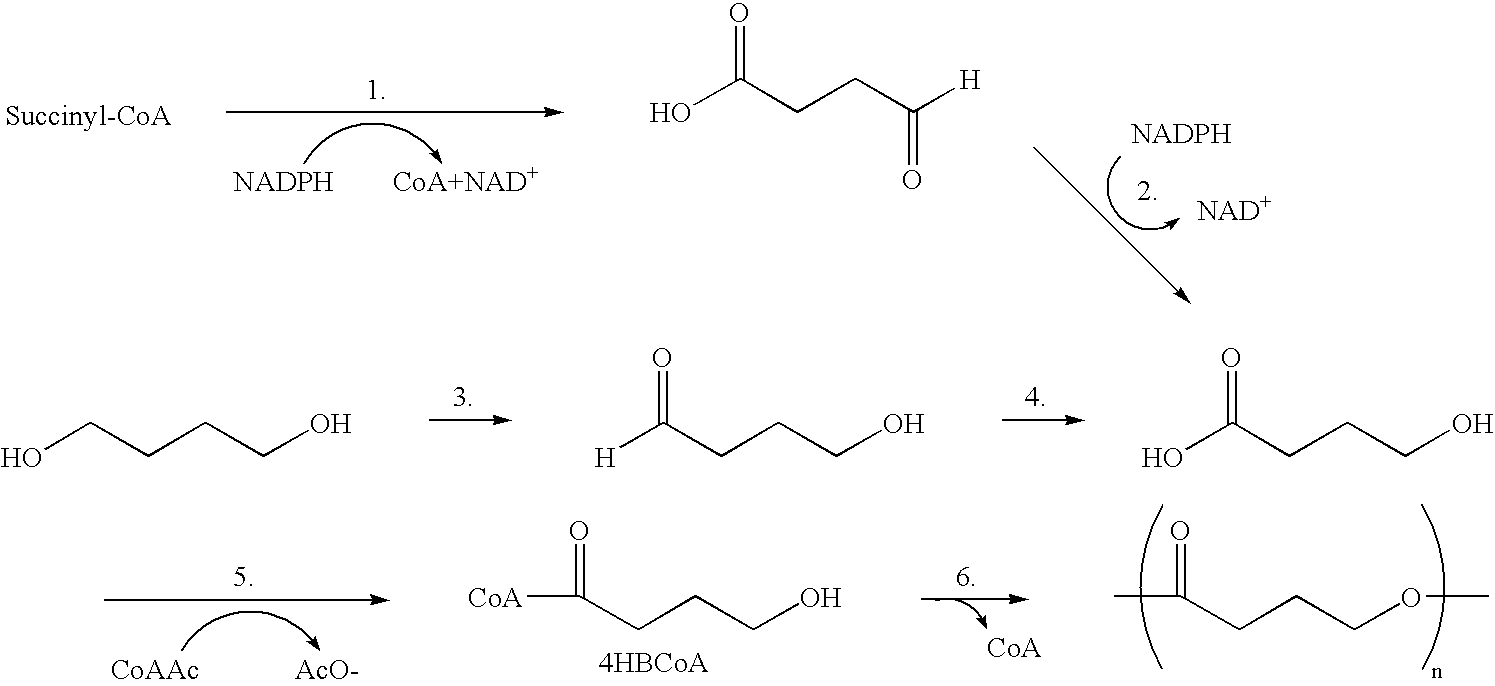Medical devices containing oriented films of poly-4-hydroxybutyrate and copolymers
a technology of polyhydroxybutyrate and copolymer, which is applied in the field of polymer compositions, can solve the problems of low toughness of films, inability to produce polymers with a sufficiently high molecular weight that is necessary for most applications, and inability to meet the requirements of many procedures and applications, etc., and achieves high toughness, low modulus, and high tensile strength.
- Summary
- Abstract
- Description
- Claims
- Application Information
AI Technical Summary
Benefits of technology
Problems solved by technology
Method used
Image
Examples
example 1
Preparation of Solvent Cast P4HB Film by a Continuous Process
[0058]A homogeneous solution of P4HB in 1,4-dioxane (15% wt / vol) was prepared by dissolving 91 g of P4HB in 610 ml of 1,4-dioxane. This solution had a viscosity of approximately 7,400 cP. The polymer solution was pumped at approximately 36 ml / min at room temperature through a 150 mm slot die with a 400 μm die gap onto a moving web of aluminum foil. The web speed was approximately 0.5 m / min and traveled 5 m before being collected on a collection roller. Three separate air drying zones set at 50-60° C. were employed to desolventize the polymer film before collection on the final roll. Using these conditions, a 43 μm thick film was obtained. A thinner film (24 μm thick) was obtained by increasing the web speed to 0.75 m / min and reducing the polymer concentration to 10%. Thinner films may also be obtained by reducing the die gap or pump speed. Mechanical properties of the solvent cast films compared to commercially available S...
example 2
Preparation of a P4HB Film by Extrusion Casting and Stretching
[0059]P4HB (Tepha, Inc., Cambridge, Mass.) (Mw 506,000) was ground into small pieces using a Fritsch cutting mill (Pulversette 15, 10 mm bottom sieve) and dried under vacuum overnight to less than 0.01% (w / w) water. Dried pellets of the polymer were fed into an extruder barrel of a Leistritz 27 mm, 40:1 L / D co-rotating twin screw extruder fitted with 10 inch wide coat-hanger die with adjustable die lips initially set at 0.015 inch gap. Eleven heating zones of the extruder were set at 75, 90, 110, 110, 130, 130, 130, 150, 150, 200 and 200° C. and the die temperature was set at 200° C. Polymer feed rate was set at 1 lb / hr and the extruder speed was set at 100 rpm. Melt pressure measured 247 psi and melt temperature measured 208° C. A 7-inch diameter roll was used for casting. Roll surface temperature was kept at 12° C. and film line speed was maintained at 3 feet per minute. The properties of a film derived by this process ...
example 3
Comparative Data for Commercial Films
[0060]Tables 4 and Table 5 below illustrate the advantageous mechanical properties of P4HB films prepared by the methods described herein. Their tensile properties are compared with films made from an absorbable polymer, L-PLA (L-polylactic acid), unoriented P4HB films produced in this work and with unoriented P4HB films produced in a batch process.
TABLE 4Tensile Property ComparisonTensileElongationTensileStrengthat BreakModulusToughnessSampleskgf / mm2%kgf / mm2kgf / mm2P4HB Unoriented5.271,00066.0N / AFilm, Batch ProcessSee U.S. Pat. No.6,548,569P4HB Melt Extruded5.48500-120027.72249Unoriented (Averagevalues from Table 3)P4HB Biaxially14.1325.022.5184.0orientedPLLA Film6.321.50745.63.875
TABLE 5Ball Burst Strength Comparison (1.0 inch ball, 1.75 inch opening,300 mm / min ball speed per ASTM D6797-2)BallBurstBurstdisplacementThicknessLoadStressat breakSamplesmmkgfkgf / mm2mmP4HB Melt0.03616.1414.2895.3ExtrudedUnorientedP4HB Melt0.05919.1311.7187.6ExtrudedUno...
PUM
| Property | Measurement | Unit |
|---|---|---|
| Length | aaaaa | aaaaa |
| Length | aaaaa | aaaaa |
| Length | aaaaa | aaaaa |
Abstract
Description
Claims
Application Information
 Login to View More
Login to View More - R&D
- Intellectual Property
- Life Sciences
- Materials
- Tech Scout
- Unparalleled Data Quality
- Higher Quality Content
- 60% Fewer Hallucinations
Browse by: Latest US Patents, China's latest patents, Technical Efficacy Thesaurus, Application Domain, Technology Topic, Popular Technical Reports.
© 2025 PatSnap. All rights reserved.Legal|Privacy policy|Modern Slavery Act Transparency Statement|Sitemap|About US| Contact US: help@patsnap.com


